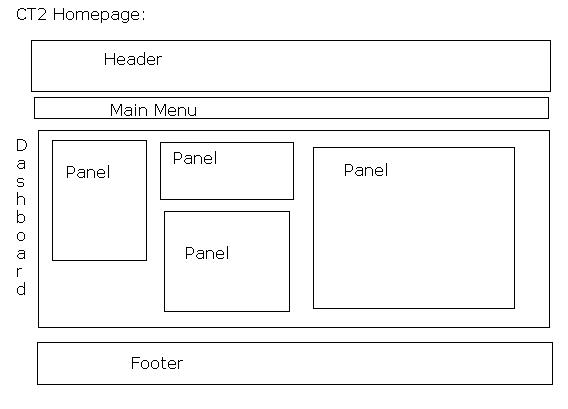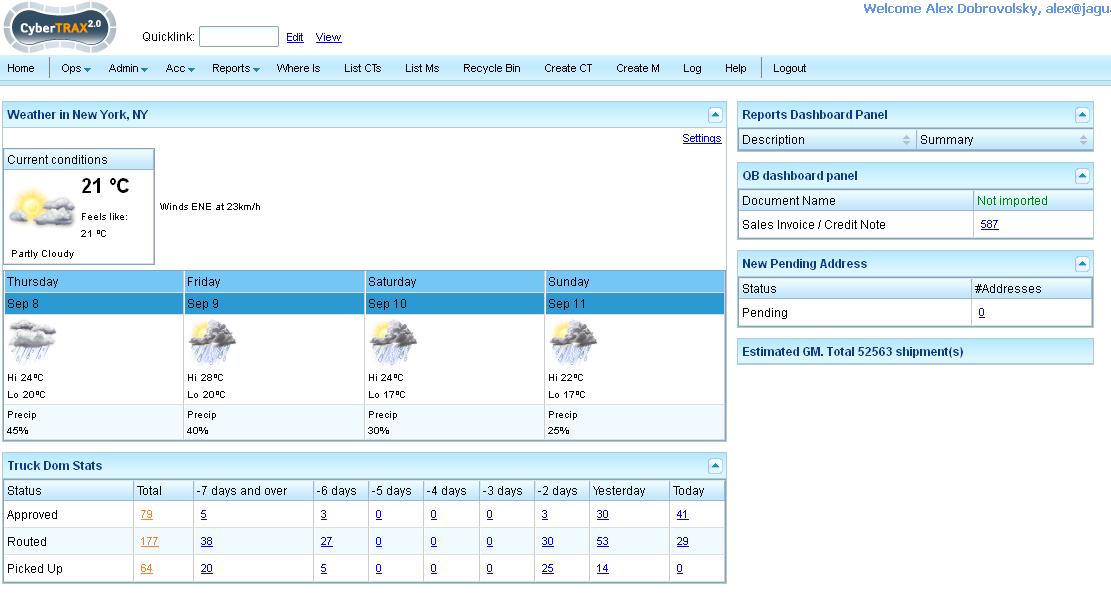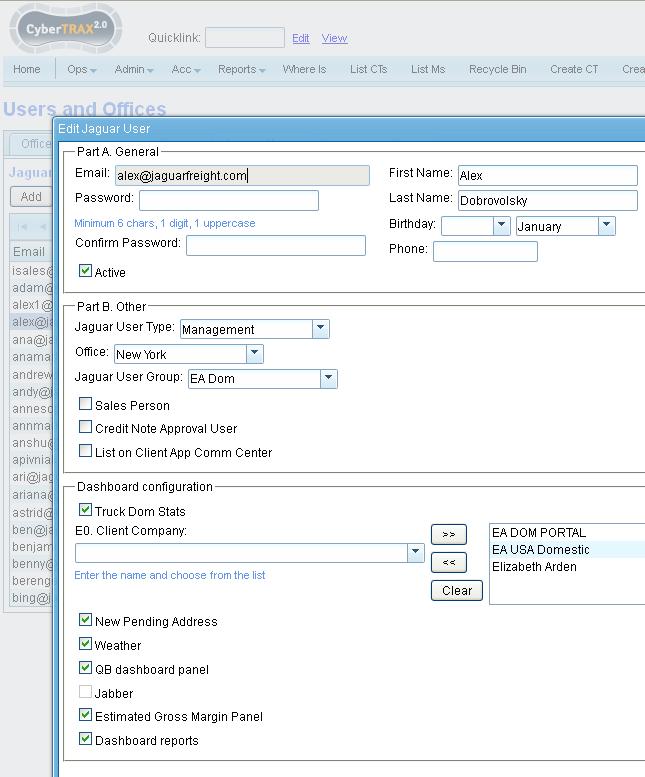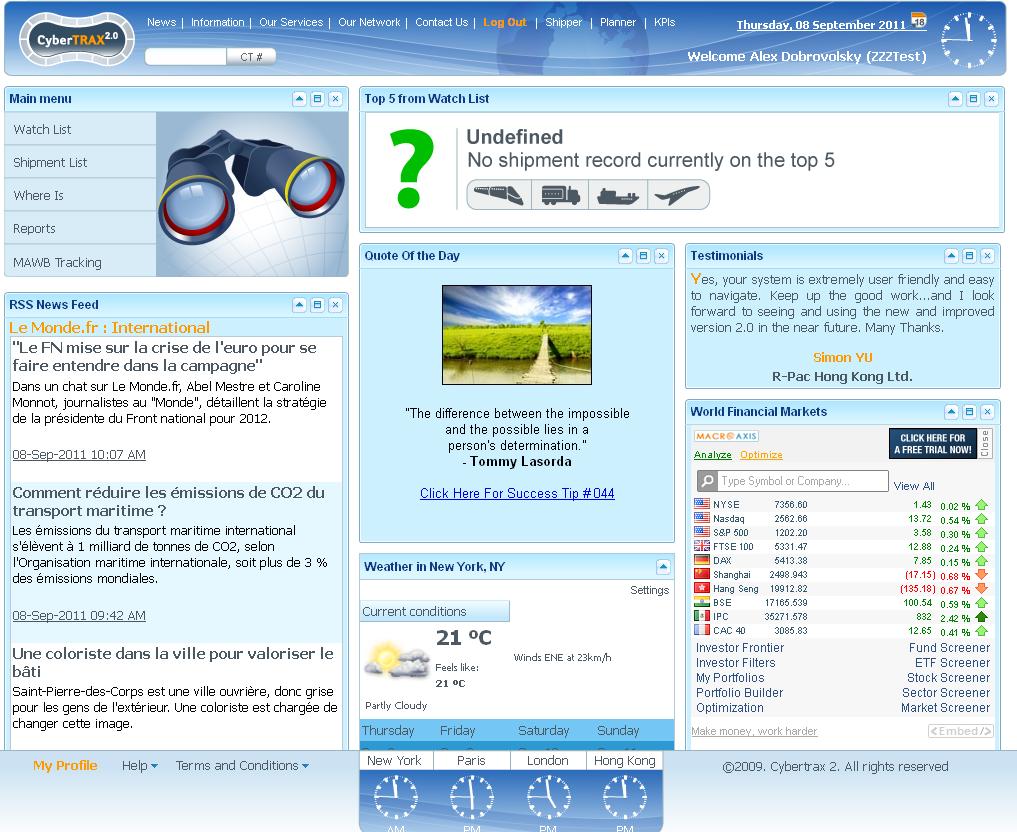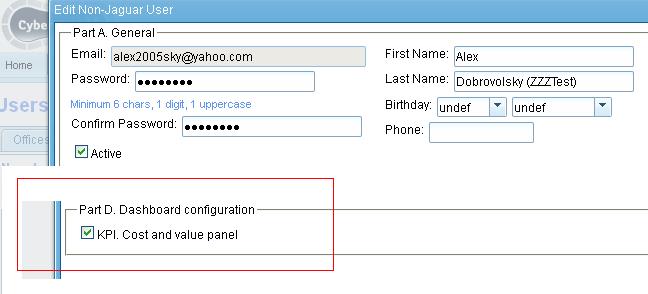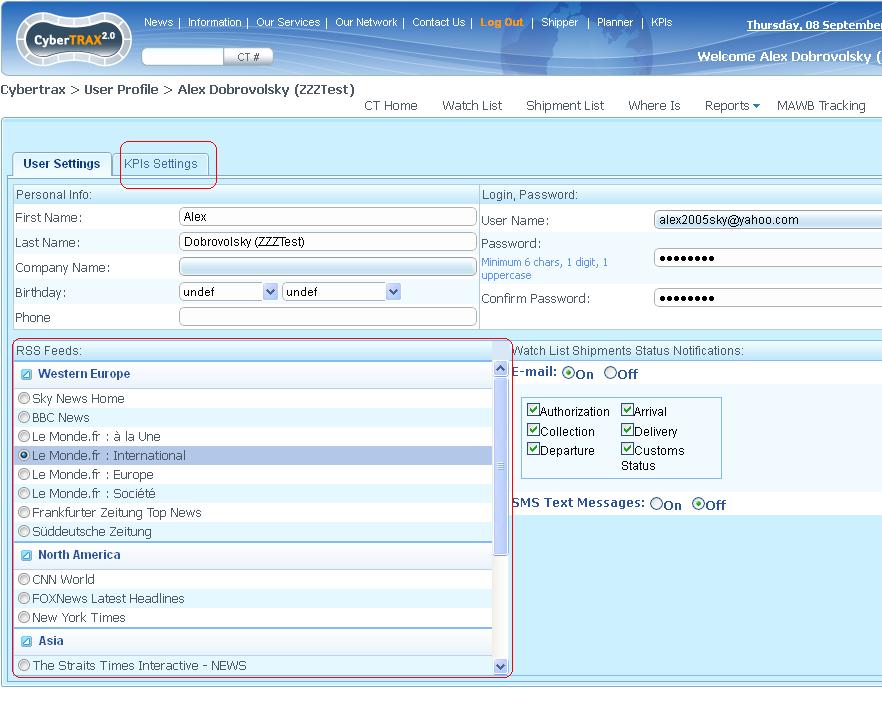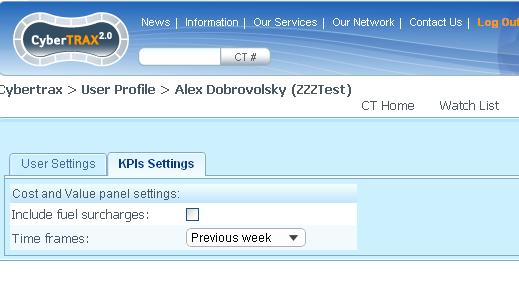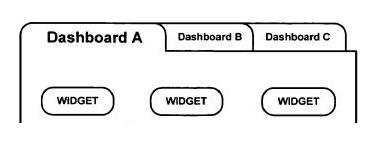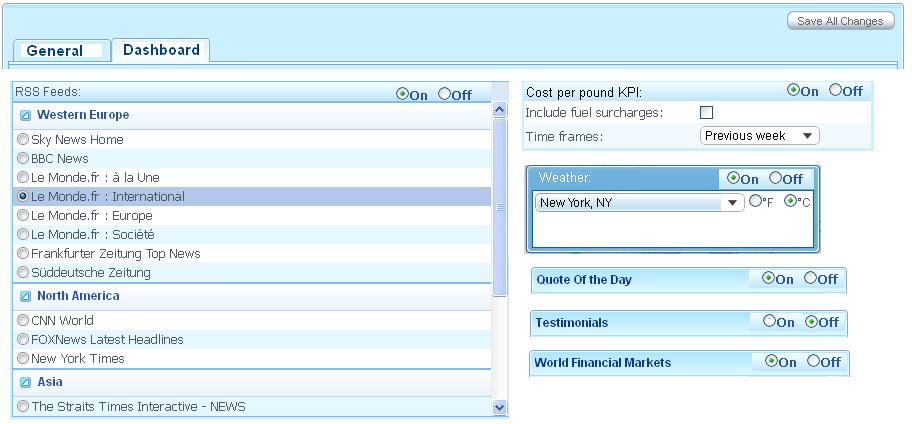Dashboard framework
From UG
(→SOW 2) |
(→Exceptions) |
||
| Line 117: | Line 117: | ||
It is possible that it would be hard to fully consolidate all settings for specific widget or DR in one place. For example for Action Required DRs (see [[DR for 9 existing Action Required internal reports]]) certain parameters are defined at the ''Reports Scheduler'' level. | It is possible that it would be hard to fully consolidate all settings for specific widget or DR in one place. For example for Action Required DRs (see [[DR for 9 existing Action Required internal reports]]) certain parameters are defined at the ''Reports Scheduler'' level. | ||
| + | |||
| + | See also: [[#DR for 9 existing Action Required internal reports]] | ||
=== Persistence === | === Persistence === | ||
Revision as of 17:12, 6 January 2012
Contents |
Info
- parent: 0003127: (Dashboard) ......
Business Requirements
- Need special page with various panels such as Weather, News, etc
- Need separate area on Dashboard for Dashboard Reports (DRs)
- above should be available on both Client and Internal Apps
- need flexible admin to manage above on the system, manager, user levels
- persistence (system must remember last state of dashboard for individual user to reproduce at the next login)
Glossary
Dashboard - it is a space between Header/Main Menu and Footer on a CT2 Home Page. It contains various Panels ("Widgets") with valuable information such as "Weather", "RSS News feeds" or "Truck Dom Stats Dashboard Report".
One important type of Dashboard widget is Dashboard Report (DR). Sometime we call them KPI. For more info see DR framework wiki.
Fig below explains layout.
Solution version 1
This is a current version !
Since we have 2 apps currently (Client and Internal) implementation for each slightly differs.
Dashboard for Internal App
Example:
Example of related config:
Dashboard for Client App
Client example (Main Dashboard):
KPIs Dashboard (additional dashboard):
Related config (superuser level):
Related config (user level):
SOW 2
Approved by Marc --Alex 14:33, 4 October 2011 (EDT)
In this version we attempt to set standards for how/where to configure dashboard panels. It also suggests another approach to adding additional dashboards to the system.
Multiple dashboards
- tabs should be named by user (default: one tab named "Main")
- users should be able to assign panels to specific dashboard tabs (default: all panels on "Main" tab)
Settings (configurations)
Levels of dashboard panel management:
- CT2 Admin level settings
- These are settings for each dashboard panel (manage defaults, etc).
- Location: Home > Admin > Dashboard
- User settings (Admin level)
- Location: Home > Admin > Users Admin
- This is managed by superuser
- User settings (User level)
- Location: Home > User profile
- This is managed by user
User level User settings
DR for 9 existing Action Required internal reports
Please display in read only format these settings for user.
Admin level user settings
This could be the same list as the above (in this case it would define defaults or could be used to change settings at the Admin level at some point). Or they could include additional settings. Some parameters could be managed at admin level only. In this case they would appear as read only in User settings (User level).
Company level settings
Removed by Marc - see history.
Manager level settings
Removed by Marc - see history.
CT2 Admin level settings
Similarly to #Company level settings these settings regulate defaults on a highest (system) level. Also there could be some other global settings associated with specific panel/widget/DR.
At this level we could also define what user roles would see what widgets/panels.
Exceptions
It is possible that it would be hard to fully consolidate all settings for specific widget or DR in one place. For example for Action Required DRs (see DR for 9 existing Action Required internal reports) certain parameters are defined at the Reports Scheduler level.
See also: #DR for 9 existing Action Required internal reports
Persistence
System must remember last state (location, state [open/closed], settings) of Dashboard for individual user to reproduce it at the next login.
